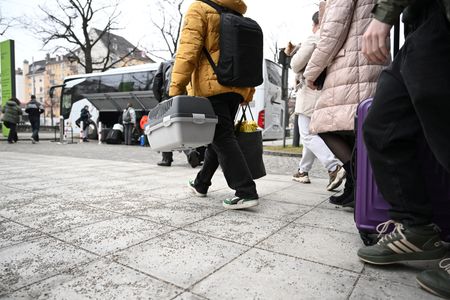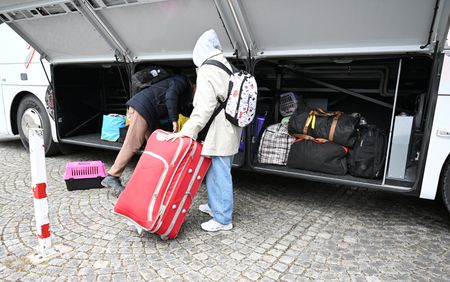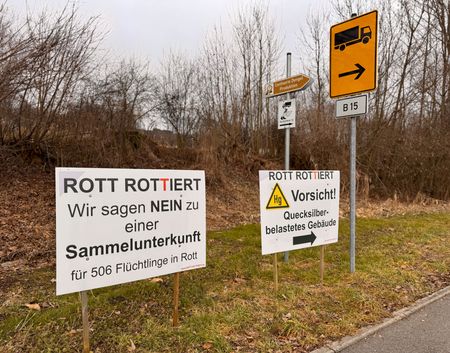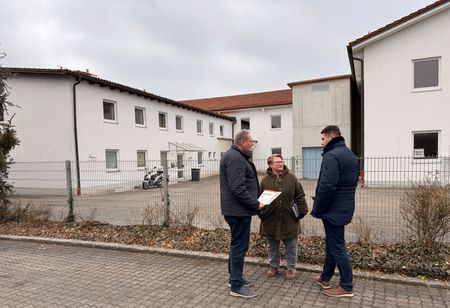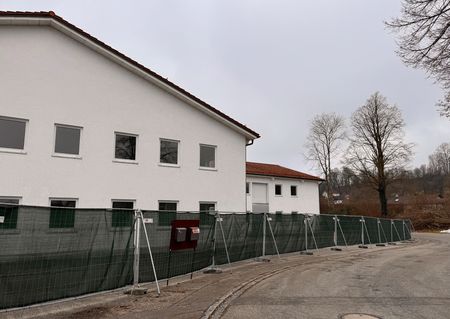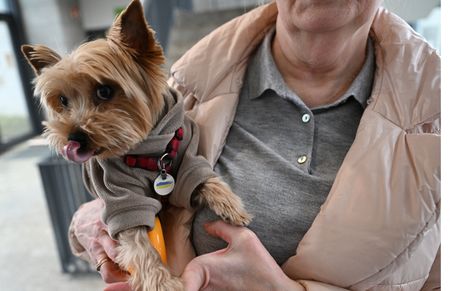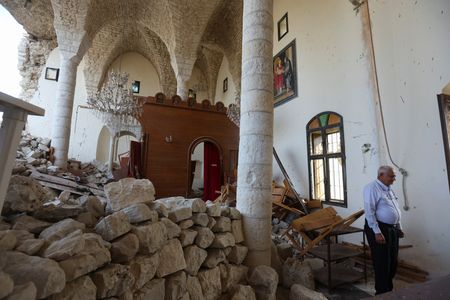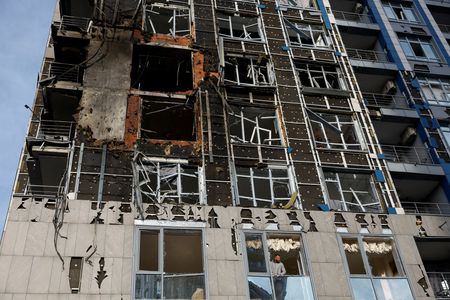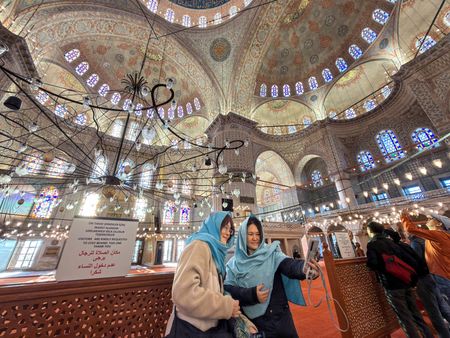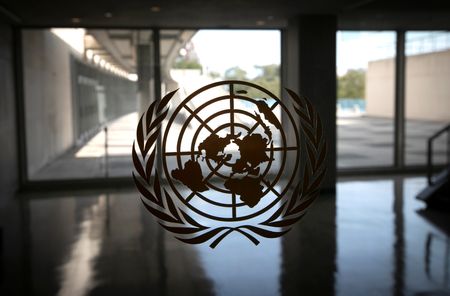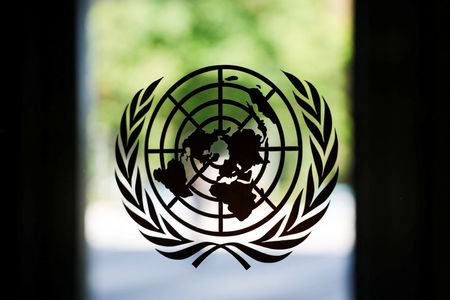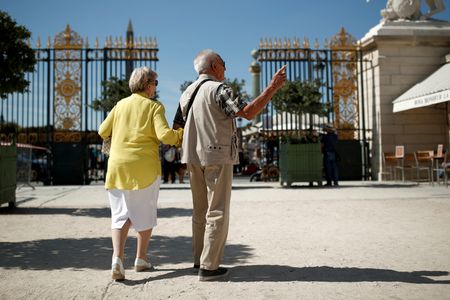By Riham Alkousaa
ROTT AM INN, Germany (Reuters) – Outside a disused lamp factory in the southeastern German village of Rott am Inn, four mannequins, including one holding a baby, are squashed against the wall next to two bunk beds.
The display, meant to symbolise Germany’s struggle to cope with refugees, is part of a protest against local authorities’ plans to house 300 migrants at the site. The plan has sparked more than a dozen demonstrations, a petition with 4,000 signatures and three pending lawsuits.
Such protests reflect wider debate about migration ahead of national elections on February 23 in Germany, where support for the hard-right, anti-immigration Alternative for Germany (AfD) has surged. Migration ranks among voters’ top concerns.
The issue shows a profound shift in German public sentiment since its “Refugees Welcome” culture during Europe’s migrant crisis in 2015.
“We do not have the infrastructure capacity to accommodate so many people at once in our community,” said Korbinian Hein, 24, the son of the owner of a freight company located in front of the Rott am Inn site.
“Our town has 2,200 residents, and now they plan to house 300 refugees here. That is a glaring imbalance in relation to the population size.”
Support for the AfD rose 7 percentage points in Rott am Inn in European Parliament elections last year from 2021 as the party tapped local frustrations over the shelter plans.
“I don’t understand how anyone can justify putting young asylum seekers in such a situation or risk disturbing the peace in the village,” Leyla Bilge, AfD candidate for the nearby Bavarian city of Rosenheim, told Reuters.
Residents worry about the burden on local infrastructure even in one of Germany’s wealthiest regions, and also have concerns about overcrowding leading to conflict, and about the refugees’ safety. Two of the rooms in the factory were closed due to mercury contamination.
Otto Lederer, the administrator of Rosenheim district that is home to Rott am Inn, said efforts to find alternative refugee housing in other municipalities had failed. He added that the state of Bavaria, which funds refugee housing, rejected a proposal to build container housing instead of using the industrial hall in Rott am Inn due to higher costs and the need to quickly empty sports halls currently used for refugee housing.
Nearly 40% of municipalities in Germany described their refugee situation as being in “emergency” or “crisis” mode, a survey by the Institute for Democratic Development and Social Integration showed in November.
Nationwide, public opposition to accepting more refugees has increased, climbing to 68% last month from 55% in 2022, according to the German Institute for Global and Area Studies.
The federal government allocates 7,500 euros ($7,777) a year per asylum seeker to states but this doesn’t count people whose asylum requests were rejected and who remain in Germany.
“If you look at the actual costs on the ground … we are talking about costs closer to 15,000 euros per year, and this is trending upwards,” Andre Berghegger, head of the German Association of Cities and Municipalities, told Reuters.
In the first three quarters of last year, municipalities reported a 25.9 billion euro deficit, 14.5 billion more than the same period in 2023, due to rising expenditure on housing assistance and welfare support.
FROM WELCOME CULTURE TO DISILLUSION
Rosenheim, which is 16 km (10 miles) from Rott am Inn and close to the Austrian border, was one of the first stops for refugees entering Germany in 2015. Volunteers welcomed them at train stations in what became a symbol of Germany’s “Welcoming Culture”.
The welcome was fuelled by strong economic growth, allowing Germans to take pride in their humanitarian role after being seen as tough enforcers during the euro zone crisis, said Anne Koch, a migration policy researcher at the German Institute for International and Security Affairs.
Growth has since stalled, with mainstream political parties on the one hand agreeing that migrants can help plug the country’s skilled labour shortage while also hardening their stance towards irregular migration.
“In 2015, people in our region were very, very open to refugees. But when the numbers increased so much, a certain amount of disillusionment set in,” Lederer said.
The number of sheltered homeless individuals in Germany more than doubled between 2022 and 2024, partly because many refugees who have been granted asylum remain in temporary shelters due to a lack of housing, according to a parliamentary inquiry in December.
“What should the district administrator do? He gets people dropped off at his door by bus and then he is lovingly told to accommodate them. What should he do? And that happens every day. Not nice. Not nice at all,” Daniela Ludwig, candidate in Rosenheim for the conservative CSU party, told Reuters.
Her party’s campaign posters in the Rosenheim area pledge to curb migration.
The Bavaria-based CSU is allied nationally with the Christian Democrats (CDU), and together they are expected to come first in the election.
TACKING RIGHT
Violence involving suspects with migrant backgrounds, including in Aschaffenburg last month where an Afghan asylum seeker was arrested over a deadly knife attack targeting children, has intensified voter concerns about security and migration.
The belief that refugees increase violent crime rose to nearly 69% last month from 55% in 2022, according to a study by the German Institute for Global and Area Studies.
Nationally, in 2023 refugees made up approximately 3.5% of Germany’s total population, yet the proportion of suspected offenders was 8.9% of all criminal suspects, according to the Federal Criminal Police Office (BKA).
Christian Walburg, a criminologist at the University of Muenster, said the trend can be partly attributed to demographics of age and gender, in addition to a lack of social network or support system and the unstable living situation in refugee shelters.
In Rott am Inn, Hein’s 55-year-old father said he was proud to have hired two refugees — one from Eritrea and another from Ukraine — for his freight company and believes the village remains welcoming.
“Migration isn’t the problem — it could be the solution if managed fairly and humanely. The real issue is creating two separate societies: one locked away in shelters and the other outside,” he said.
($1 = 0.9643 euros)
(Reporting by Riham Alkousaa; Editing by Matthias Williams and Frances Kerry)

